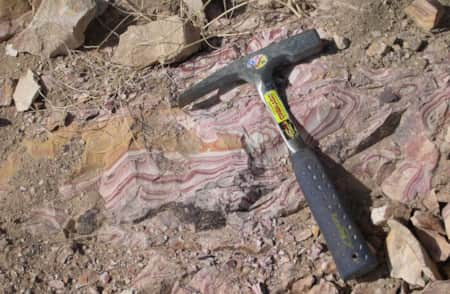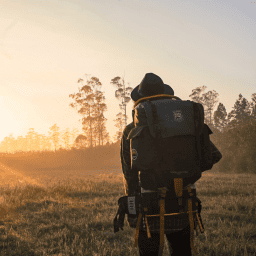Introduction: What is Rockhounding?
Rockhounding is the recreational activity of searching for and collecting rocks, minerals, fossils, and gemstones in their natural environments. For some, it’s a peaceful way to connect with nature. For others, it’s an exciting hunt for rare geological finds. Whether you’re a beginner or an experienced collector, rockhounding offers an enriching experience filled with adventure, science, and beauty.
As more people seek outdoor activities that are educational and affordable, rockhounding is seeing a surge in popularity across all age groups. This guide will explore the history, tools, best locations, laws, safety tips, and how to get started in this fascinating hobby.
The History of Rockhounding
The roots of rockhounding stretch back thousands of years. Early humans collected stones for tools, weapons, and decoration. Civilizations such as the Egyptians, Greeks, and Chinese prized minerals and gemstones for their beauty and spiritual significance.
Modern rockhounding emerged in the 19th and 20th centuries, as interest in geology, mining, and paleontology grew. With advances in scientific understanding, hobbyists began learning to identify rock types, fossils, and mineral formations. Today, rockhounding is both a serious scientific pursuit and a relaxing pastime.
Why People Love Rockhounding
1. Adventure and Exploration
Rockhounding takes you into deserts, forests, riverbeds, and mountains. Every trip is a journey into the unknown, and the possibility of finding something rare keeps the excitement alive.
2. Connection with Nature
Unlike indoor hobbies, rockhounding immerses you in the natural world. You’ll learn about local geology, ecosystems, and the earth’s processes.
3. Education and Science
It’s a hands-on way to study earth science. Many rockhounds learn to identify minerals, understand geologic time periods, and even contribute to fossil discoveries.
4. Collecting and Crafting
Found items can be kept, traded, or turned into jewelry and art. For collectors, the thrill is in identifying and cataloging their finds.
Types of Finds in Rockhounding
What you can find depends on where you search. Here are some common discoveries:
Rocks and Minerals
- Quartz: Clear or colored crystals found in many regions.
- Agate: Banded, colorful stones popular in jewelry.
- Jasper: An opaque, patterned variety of chalcedony.
- Fluorite: Often found in vibrant colors and fluorescent under UV light.
Gemstones
- Garnet: A deep red gem commonly found in metamorphic rock.
- Topaz: Found in pegmatites and known for its clarity.
- Amethyst: Purple quartz prized for its beauty.
- Tourmaline: Known for its range of colors, often found in granite-rich areas.
Fossils
- Petrified Wood: Ancient trees turned to stone through mineralization.
- Shells and Marine Fossils: Found in former seabeds, often inland.
- Trilobites and Brachiopods: Extinct marine animals preserved in limestone.
Essential Tools for Rockhounding
You don’t need to invest heavily to start. Basic rockhounding tools include:
- Rock Hammer: For breaking rocks and chiseling out specimens.
- Chisel: Helps with precision when splitting rocks.
- Hand Lens or Loupe: For identifying details up close.
- Geological Field Guide: To help with identification.
- Collection Bags or Buckets: For storing your finds.
- Safety Gear: Gloves, eye protection, and sturdy boots are essential.
Optional tools:
- Gold Pan or Sluice Box (for areas with placer gold)
- UV Flashlight (for finding fluorescent minerals)
- GPS or Offline Map App (for navigating remote areas)
Where to Go Rockhounding
Location is everything. Some areas are known for specific minerals, while others are rich in fossils or gemstones.
Public Lands
In the U.S., many public lands managed by the Bureau of Land Management (BLM) and the U.S. Forest Service are open for casual collecting.
Popular destinations include:
- Arizona – Known for turquoise, agates, and petrified wood
- California – Great for gold panning, tourmaline, and serpentine
- Oregon – Famous for thunder eggs, jasper, and opal
- Utah – Great for topaz, fossils, and red jasper
- New York – Known for garnet, quartz, and Herkimer diamonds
Pay-to-Dig Sites
Some private mines and quarries offer access for a fee. These sites usually provide tools, instructions, and guarantees of finding something.
Rivers and Streams
Gold and other heavy minerals often collect in riverbeds. Always research local regulations before panning.
Basic Rockhounding Laws
- Collecting on private land requires landowner permission.
- National parks prohibit all collecting.
- State parks have varied rules—some allow casual collecting, others don’t.
- Some fossil sites are federally protected.
It’s also crucial to follow ethical rockhounding practices:
- Take only what you need
- Leave no trace
- Don’t damage the landscape or formations
- Respect local wildlife and ecosystems
Safety Tips for Rockhounding
Though it’s a low-risk activity, safety should always come first.
1. Know the Terrain
Research the area and bring a topographic map or GPS device. Cell service is often unavailable in remote places.
2. Watch the Weather
Flash floods, extreme heat, or sudden storms can turn a fun day dangerous. Check weather forecasts and plan accordingly.
3. Wear Appropriate Gear
Long pants, sturdy boots, gloves, and a wide-brim hat offer protection from sun, insects, and sharp rocks.
4. Stay Hydrated
Always carry more water than you think you’ll need. Dehydration can sneak up quickly, especially in desert regions.
5. Let Someone Know Your Plans
Tell a friend or family member where you’re going and when you expect to return.
How to Start Rockhounding
Getting started is easier than you might think.
Step 1: Learn the Basics
Read geology guides, join rockhounding groups on social media, or attend local mineral shows.
Step 2: Pick a Beginner-Friendly Location
Look for public land or pay-to-dig sites. These are safer and usually more rewarding for new rockhounds.
Step 3: Bring the Right Tools
Start with a rock hammer, gloves, bags, and a field guide. As your interest grows, invest in more specialized equipment.
Step 4: Start Identifying Your Finds
Use guides or apps to identify minerals and fossils. Many local clubs also offer help with identification.
Family-Friendly and Educational
Rockhounding is ideal for families. Kids love digging in the dirt and discovering “treasures.” It’s also a great way to teach them science, patience, and respect for nature.
Many schools and homeschool groups incorporate rockhounding into field trips and science curriculums. It’s a perfect blend of outdoor activity and educational enrichment.
Environmental Impact and Responsible Rockhounding
As with any outdoor hobby, rockhounding should be done responsibly.
- Avoid over-collecting in one area.
- Don’t dig large holes or disturb vegetation.
- Refill any holes you dig.
- Report illegal activity or vandalism to local authorities.
By leaving sites cleaner than you found them, you help preserve them for future generations.
Joining the Rockhounding Community
There are hundreds of rockhounding clubs and online communities that offer advice, trip planning, and identification help. Joining a group can enrich your experience and give you access to group digs, guest lectures, and exclusive sites.
Some recommended organizations:
- The American Federation of Mineralogical Societies
- Rock & Gem Magazine
- Mindat.org (for global mineral data)
Conclusion
Rockhounding combines science, adventure, and the thrill of discovery. With simple tools, a bit of knowledge, and a sense of curiosity, you can uncover the beauty hidden beneath your feet. Whether you’re hunting for crystals in the desert or searching creek beds for fossils, rockhounding connects you to Earth’s deep history and offers endless rewards.




